Soviet clone ZX-Spectrum or ...
Hello.
Today there was an unusual story - I came across an ad for Avito, where a man was selling a keyboard (now the ad has already been filmed). It seems to be nothing, another ordinary announcement, of which there are thousands, but the keyboard looked a bit unusual. When reviewed in detail, he immediately went and took this thing from the former owner for 100 rubles.
Arriving home, I decided to study the entertaining thing as thoroughly and as thoroughly as possible, because I had never met such people before.
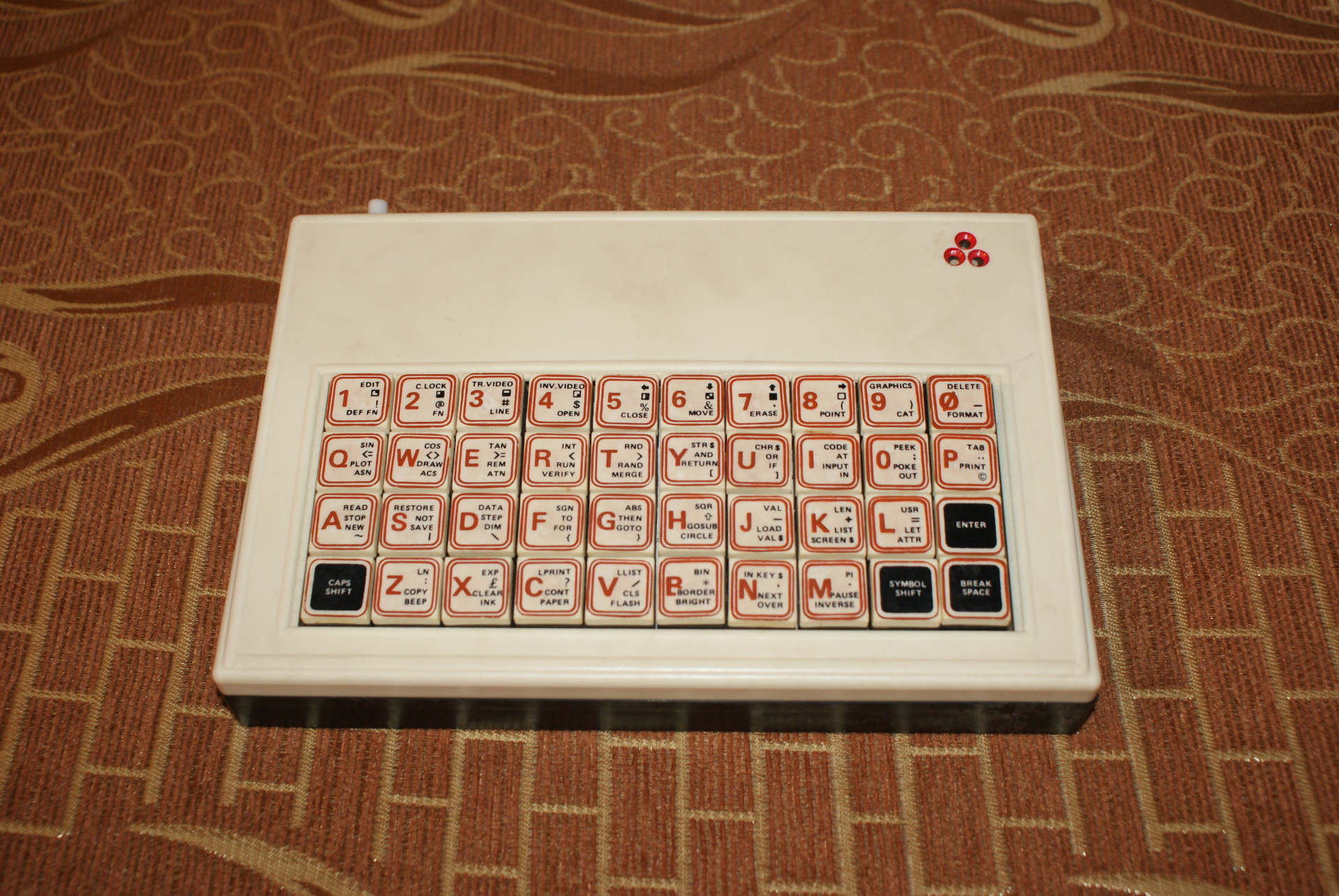
')
Under the cut a dozen more photos and some text.
First of all, I looked at this computer (and I had no doubt that it was a computer) from all sides for the presence of at least some identification signs and, unfortunately, I did not find any.
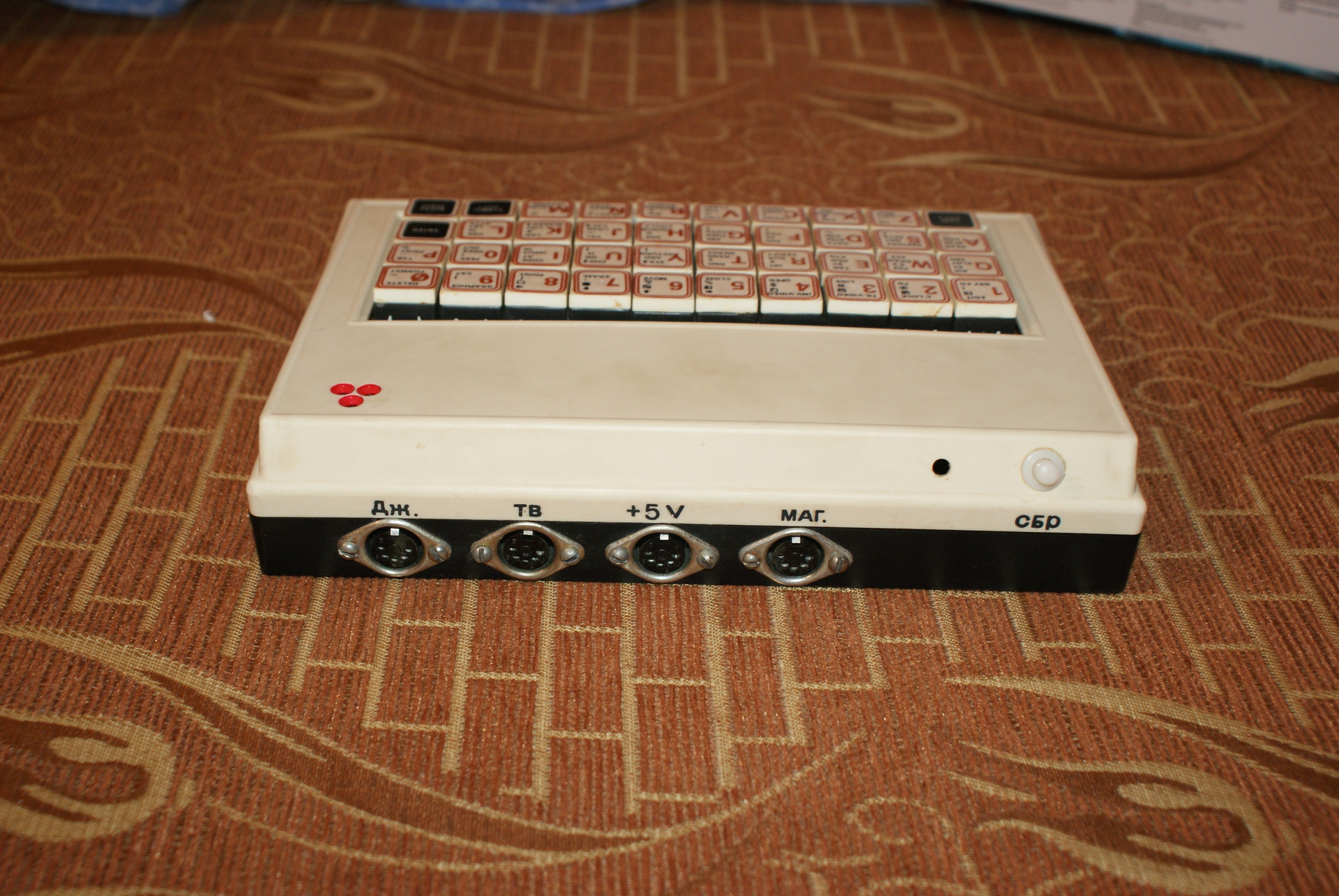
However, judging by the fact that the case is clearly printed text in Russian, and the keys - in English, we can conclude that the keys were pasted standard water (or water?) Stickers. With Cyrillic, such stickers, if my memory serves me, were very difficult to find, which is why I call such stickers “standard”. In my childhood on the elder brother's computer, 90% of the time were just such stickers, and I remember his happy expression when he found ones like Cyrillic.
I'll take the liberty to decipher the abbreviations printed on the back of the case:
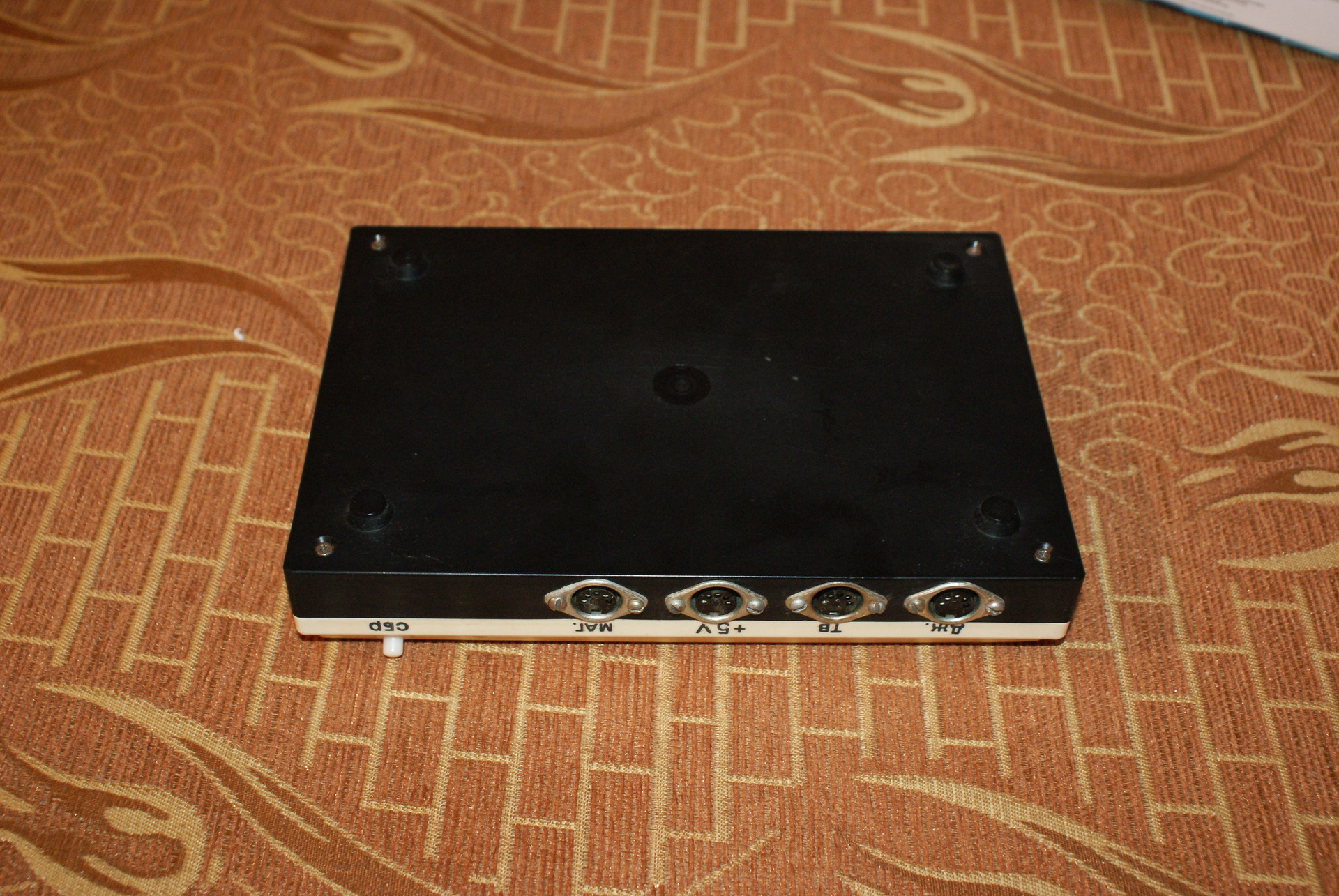
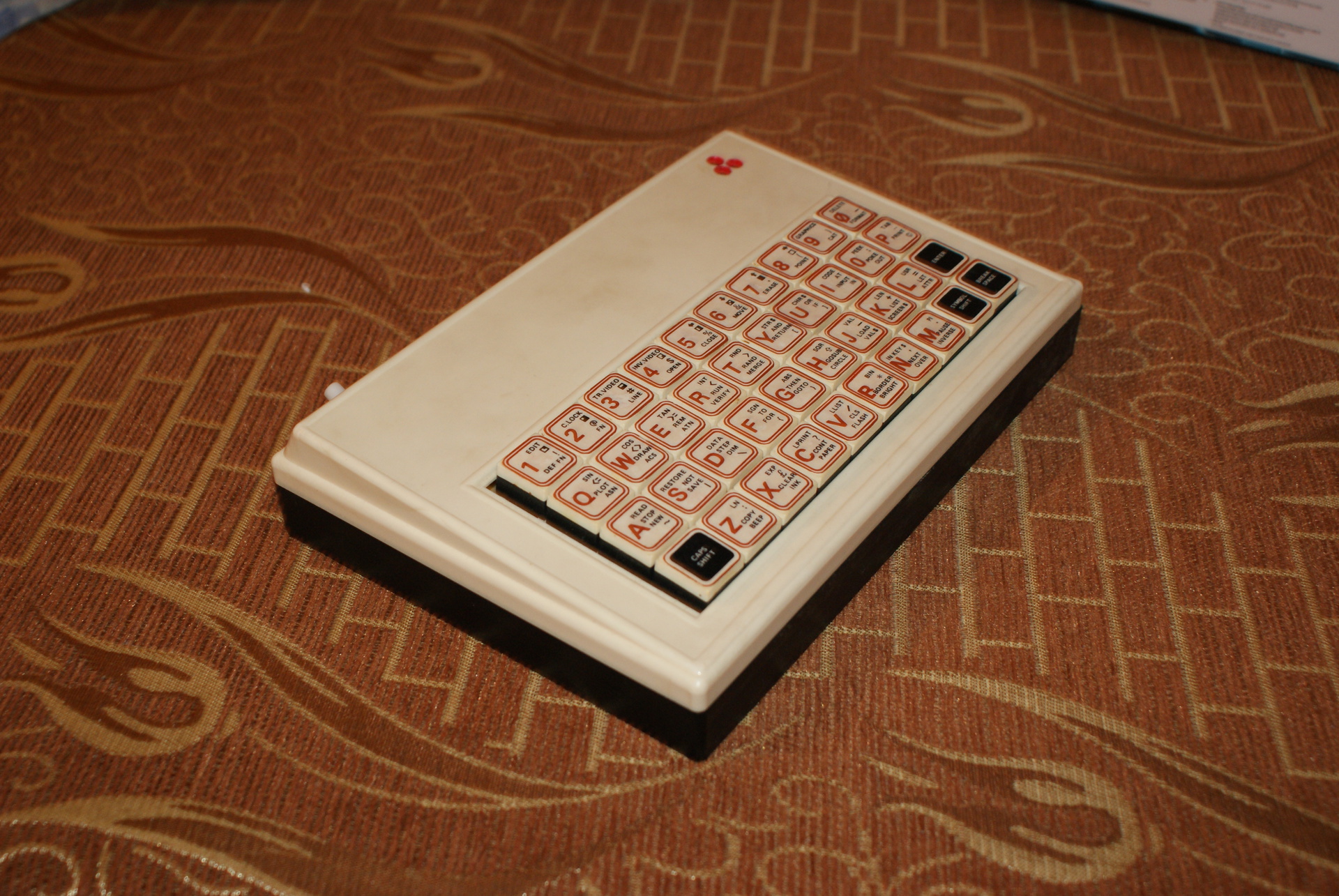
From the bottom and from the ends, as you can see, no identification marks were also found.
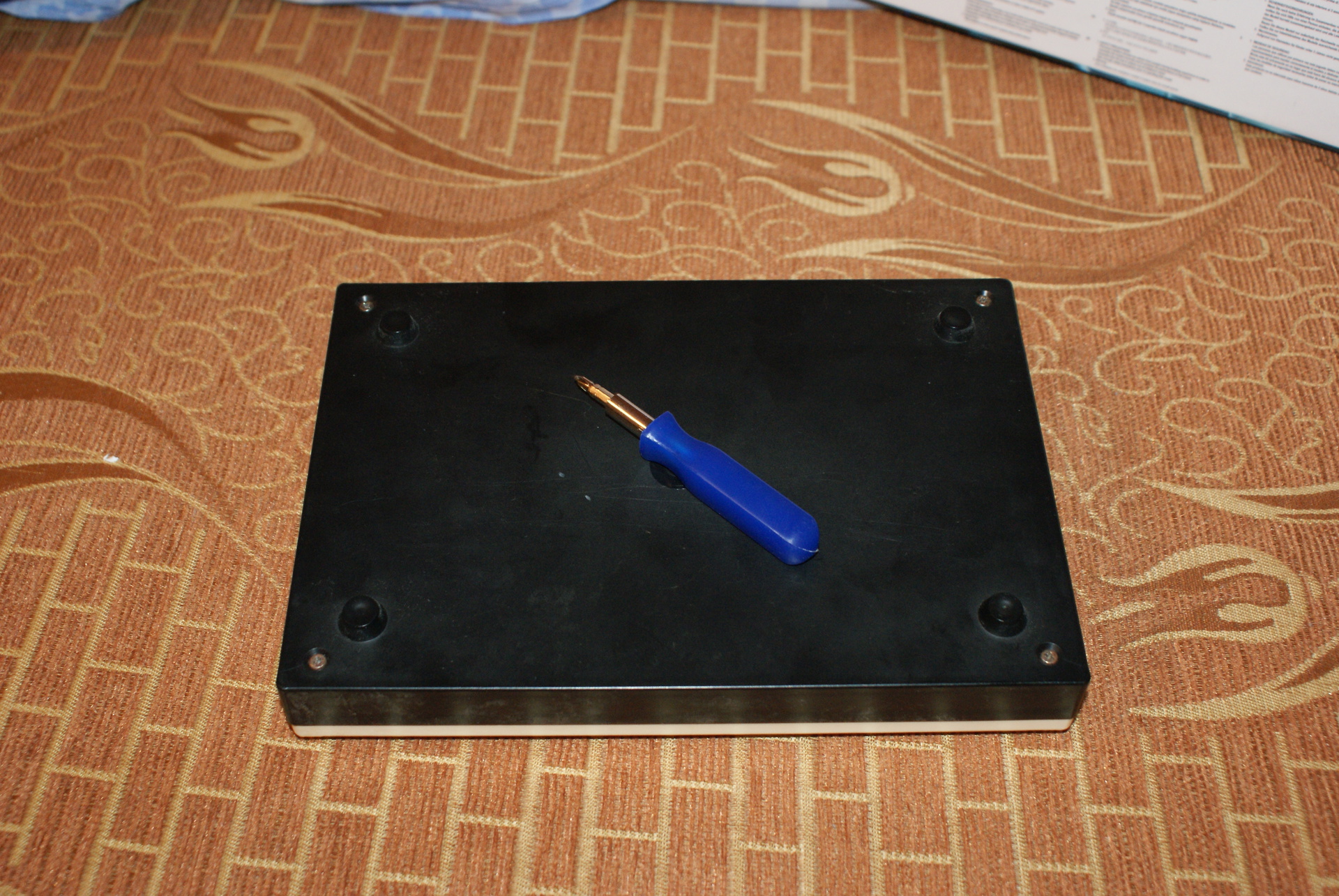
Well, it's time to disassemble this piece of iron and look inside?
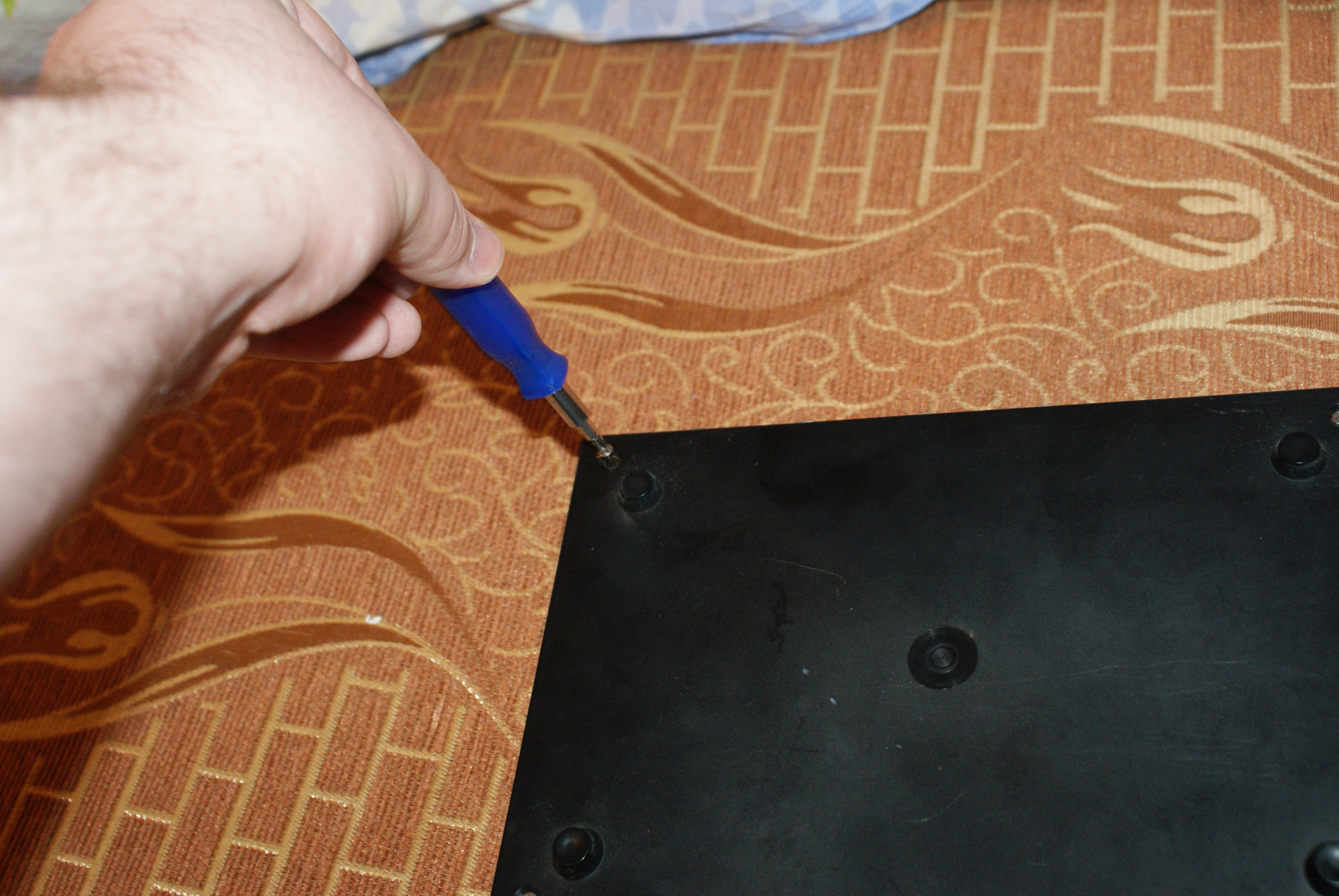
All the bolts were surprisingly long (with modern technology I was already used to ultra-thin walls and enclosures). One of them (bottom left) resisted for a very long time, because his cap was almost torn off. Through some effort, contrivance, and quiet loud curses, he was also taken free. So, here it is, the moment X - it's time to see the insides.
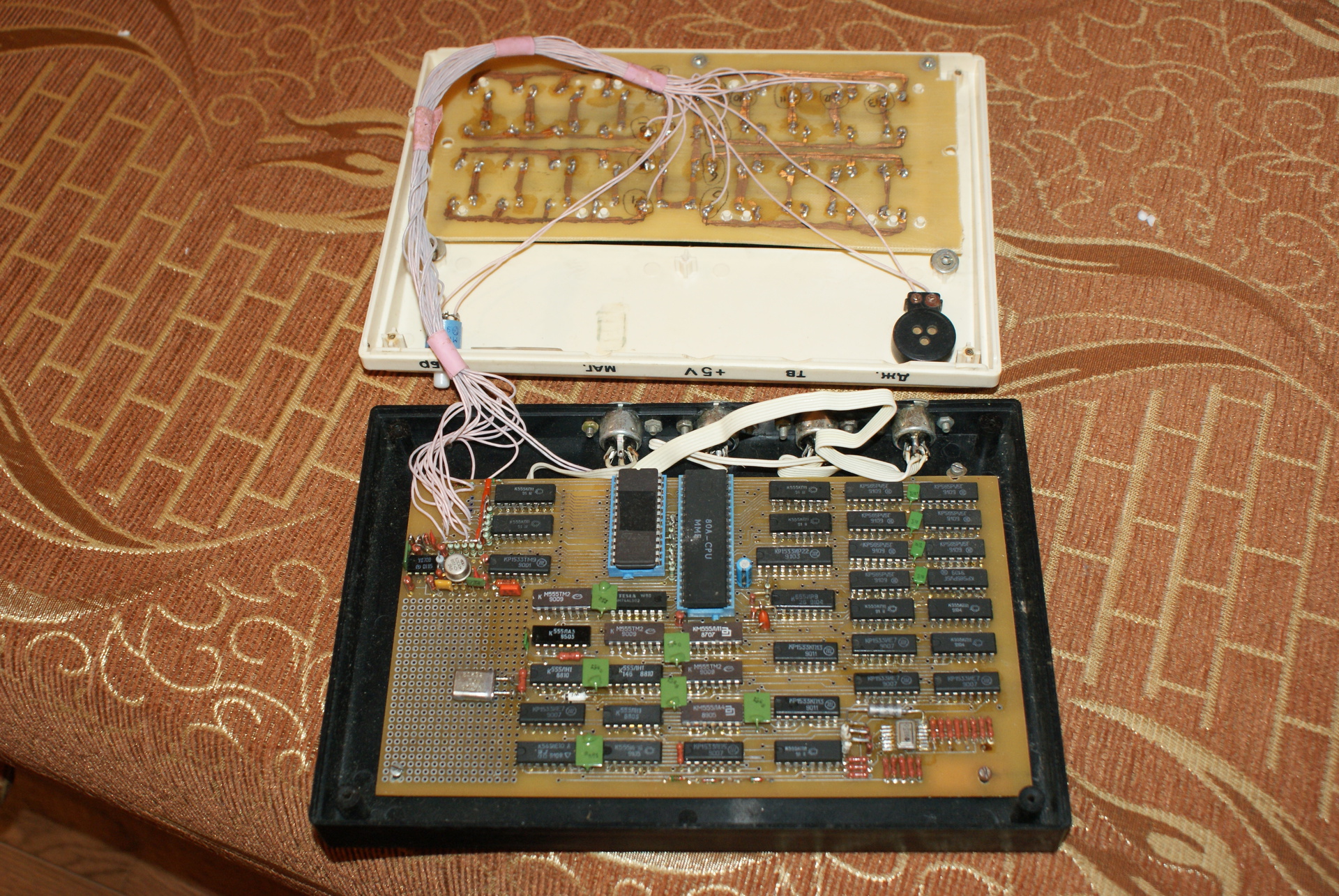
When dividing the two covers, no effort was needed, but in the process of unfolding them next to each other, a characteristic very high and thin crunch was heard - just like the long-cured rubber in wire insulation crunches. On the isolation itself, if it is not touched and not crushed, it does not affect, but it is an unequivocal sign of the old age of the thing.
Let's take a closer look at the main chips and interesting things inside this magic box.

The first thing that immediately catches your eye is the largest microcircuit with three familiar CPU letters. Upon closer inspection, it turns out that this is an 80-A CPU MME chip (this is one of the links to the description of this piece of hardware). It turns out to be very interesting, initially it was an East German (GDR) production microcircuit, and moreover, it is, in fact, a clone of the well-known Z80 chip, which was not copied only by the lazy one.

The second chip, located to the left of the central processor, is marked M27128A-2F1 (this is not particularly visible in the photo, the second line, the text can only be seen at an angle). His purpose and purpose are not particularly clear to me, but finding a datasheet on him turned out to be a rather trivial task - here it is . This document is also interesting because it is dated 1995, and the manufacturer is the international company SGS-THOMSON. Suppose the release date of the datasheet is in no way tied to the release date of the chip itself, however, we can conclude that the chip was quite popular until the '95th year.

The rest of the chips were produced in the USSR - this can be concluded on the Cyrillic marking.

Another element of the board that seemed informative and unusual to me is the bridge from the devices (to my shame, I do not understand electrical engineering and cannot distinguish the transistor from the resistor, and the diode from the triode) located in the upper left corner. Obviously, the exchange of information with the connectors took place precisely through this bridge - but it is surprising that they are all sealed against each other. Electrical engineering, explain?
Continuing to carefully examine the scheme, I could not resist and unscrew it from the bottom wall to look at it from behind.
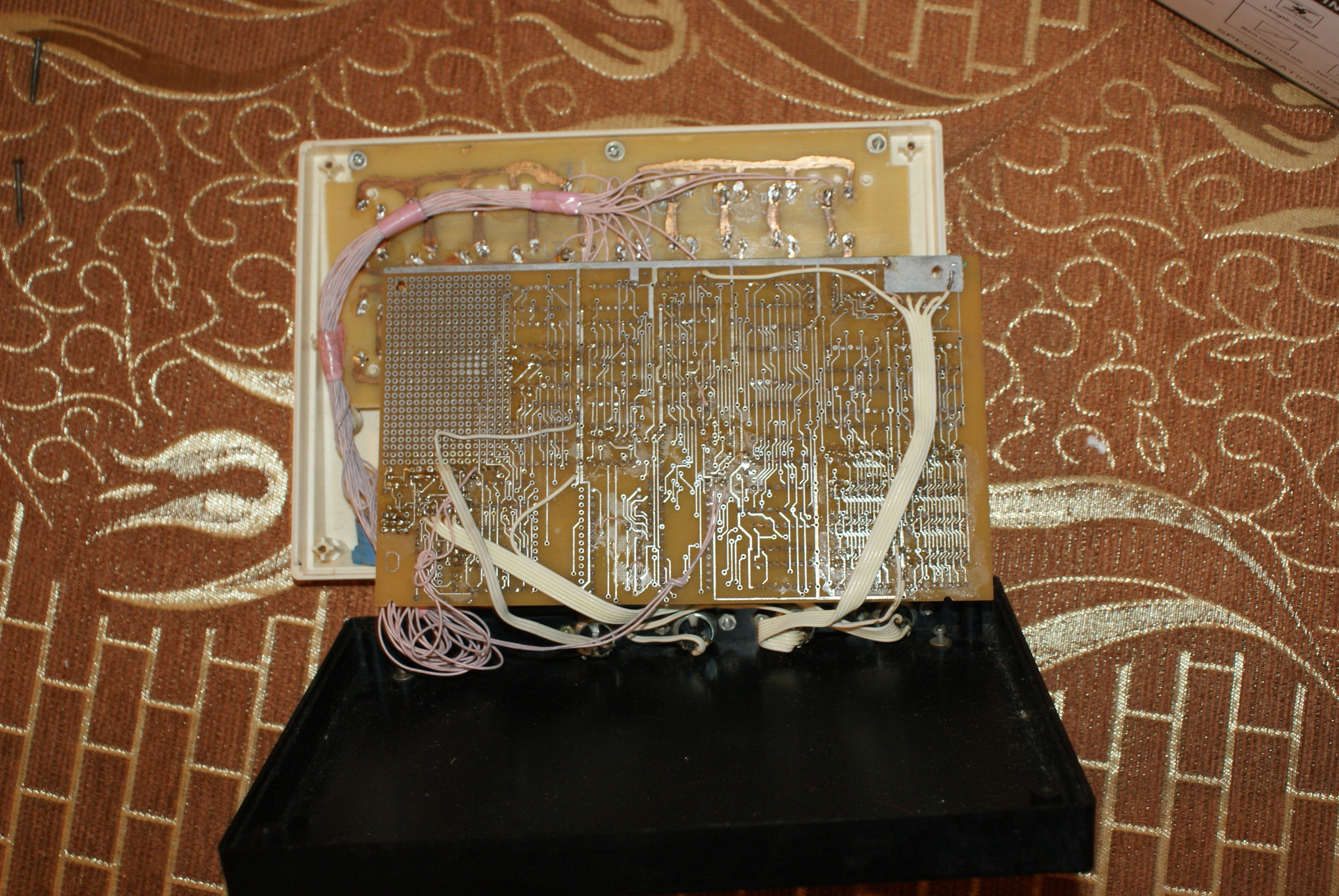
It turned out not as interesting as I expected, but still funny. For example, here is this cable of wires on the right - apparently, it did not fit on the board itself in the form of tracks, and it was decided to move it out of bounds. Or maybe the voltage on these wires is higher than on the others, and on the board they would create additional interference - only an engineer who designed this miracle can say for sure now; and may suggest a specialist.
Another funny thing I noticed was that the board was connected to the bottom wall using flat-head bolts, not even a cross.

Upon closer inspection, I realized that they remind me - an iron constructor from childhood.
After studying, I carefully collected everything back. I did not torture the poor left lower cog and just put it next. Attentive googling and search in various museums, such as this (be careful, do not put it, it can not withstand habraeffekt) did not work.
At the moment, only two questions remain unresolved.
1. What is this model, where it was produced, and in general?
2. The most important question is who will take this piece for further preparation and study? I am a lover, and I’m happy to dig deeper in the old technique, but I’m not going to do anything else to do further with it. Therefore, I propose a simple solution to the problem - the one who needs this thing writes to me. In priority citizens from Chelyabinsk :)
Thanks for attention!
UPD: The new owner has already been found, but the first question still remains open.
UPD2: Apparently, this is a non-serial sample, which is essentially a very popular Leningrad-1 board by Sergey Zonov, in a non-standard case. This fact makes this copy even more interesting! :) With a simple connection to the TV and turn on, the BASIC is loaded. For information, thanks to the user SysCat
Today there was an unusual story - I came across an ad for Avito, where a man was selling a keyboard (now the ad has already been filmed). It seems to be nothing, another ordinary announcement, of which there are thousands, but the keyboard looked a bit unusual. When reviewed in detail, he immediately went and took this thing from the former owner for 100 rubles.
Arriving home, I decided to study the entertaining thing as thoroughly and as thoroughly as possible, because I had never met such people before.
')
Under the cut a dozen more photos and some text.
First of all, I looked at this computer (and I had no doubt that it was a computer) from all sides for the presence of at least some identification signs and, unfortunately, I did not find any.
However, judging by the fact that the case is clearly printed text in Russian, and the keys - in English, we can conclude that the keys were pasted standard water (or water?) Stickers. With Cyrillic, such stickers, if my memory serves me, were very difficult to find, which is why I call such stickers “standard”. In my childhood on the elder brother's computer, 90% of the time were just such stickers, and I remember his happy expression when he found ones like Cyrillic.
I'll take the liberty to decipher the abbreviations printed on the back of the case:
- J. - obviously, to connect the joystick
- TV is the output on the TV (monitor)
- + 5 V - here the power supply was connected (apparently, it is hopelessly lost)
- MAG. - and this is a connector for connecting a tape recorder (or other storage medium; for some reason, it seems to me that it is the tape recorder that has to be connected here and transmit in an analog way everything that is recorded on the tape).
- SBR - good old uncle Reset (Reset).
From the bottom and from the ends, as you can see, no identification marks were also found.
Well, it's time to disassemble this piece of iron and look inside?
All the bolts were surprisingly long (with modern technology I was already used to ultra-thin walls and enclosures). One of them (bottom left) resisted for a very long time, because his cap was almost torn off. Through some effort, contrivance, and quiet loud curses, he was also taken free. So, here it is, the moment X - it's time to see the insides.
When dividing the two covers, no effort was needed, but in the process of unfolding them next to each other, a characteristic very high and thin crunch was heard - just like the long-cured rubber in wire insulation crunches. On the isolation itself, if it is not touched and not crushed, it does not affect, but it is an unequivocal sign of the old age of the thing.
Let's take a closer look at the main chips and interesting things inside this magic box.

The first thing that immediately catches your eye is the largest microcircuit with three familiar CPU letters. Upon closer inspection, it turns out that this is an 80-A CPU MME chip (this is one of the links to the description of this piece of hardware). It turns out to be very interesting, initially it was an East German (GDR) production microcircuit, and moreover, it is, in fact, a clone of the well-known Z80 chip, which was not copied only by the lazy one.

The second chip, located to the left of the central processor, is marked M27128A-2F1 (this is not particularly visible in the photo, the second line, the text can only be seen at an angle). His purpose and purpose are not particularly clear to me, but finding a datasheet on him turned out to be a rather trivial task - here it is . This document is also interesting because it is dated 1995, and the manufacturer is the international company SGS-THOMSON. Suppose the release date of the datasheet is in no way tied to the release date of the chip itself, however, we can conclude that the chip was quite popular until the '95th year.

The rest of the chips were produced in the USSR - this can be concluded on the Cyrillic marking.

Another element of the board that seemed informative and unusual to me is the bridge from the devices (to my shame, I do not understand electrical engineering and cannot distinguish the transistor from the resistor, and the diode from the triode) located in the upper left corner. Obviously, the exchange of information with the connectors took place precisely through this bridge - but it is surprising that they are all sealed against each other. Electrical engineering, explain?
Continuing to carefully examine the scheme, I could not resist and unscrew it from the bottom wall to look at it from behind.
It turned out not as interesting as I expected, but still funny. For example, here is this cable of wires on the right - apparently, it did not fit on the board itself in the form of tracks, and it was decided to move it out of bounds. Or maybe the voltage on these wires is higher than on the others, and on the board they would create additional interference - only an engineer who designed this miracle can say for sure now; and may suggest a specialist.
Another funny thing I noticed was that the board was connected to the bottom wall using flat-head bolts, not even a cross.

Upon closer inspection, I realized that they remind me - an iron constructor from childhood.
After studying, I carefully collected everything back. I did not torture the poor left lower cog and just put it next. Attentive googling and search in various museums, such as this (be careful, do not put it, it can not withstand habraeffekt) did not work.
At the moment, only two questions remain unresolved.
1. What is this model, where it was produced, and in general?
2. The most important question is who will take this piece for further preparation and study? I am a lover, and I’m happy to dig deeper in the old technique, but I’m not going to do anything else to do further with it. Therefore, I propose a simple solution to the problem - the one who needs this thing writes to me. In priority citizens from Chelyabinsk :)
Thanks for attention!
UPD: The new owner has already been found, but the first question still remains open.
UPD2: Apparently, this is a non-serial sample, which is essentially a very popular Leningrad-1 board by Sergey Zonov, in a non-standard case. This fact makes this copy even more interesting! :) With a simple connection to the TV and turn on, the BASIC is loaded. For information, thanks to the user SysCat
Source: https://habr.com/ru/post/377033/
All Articles